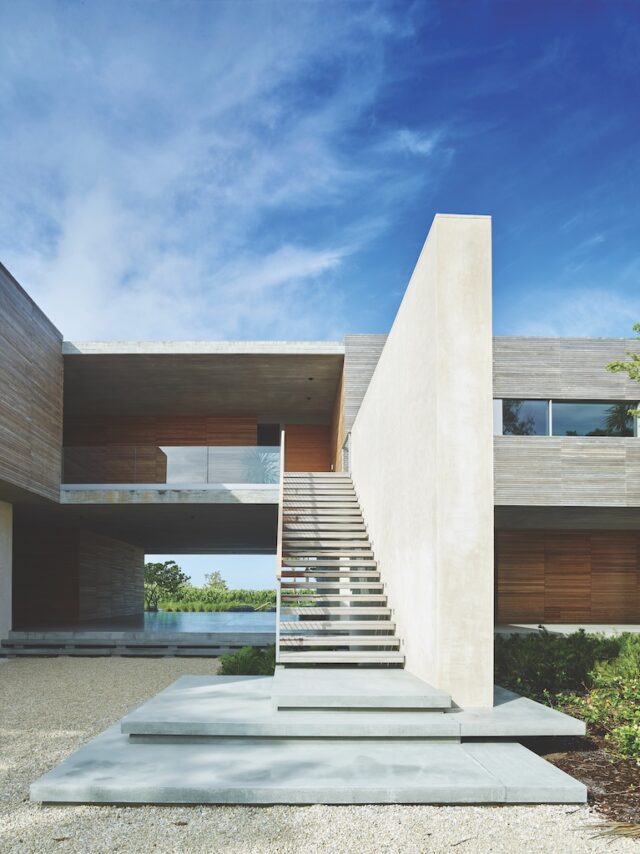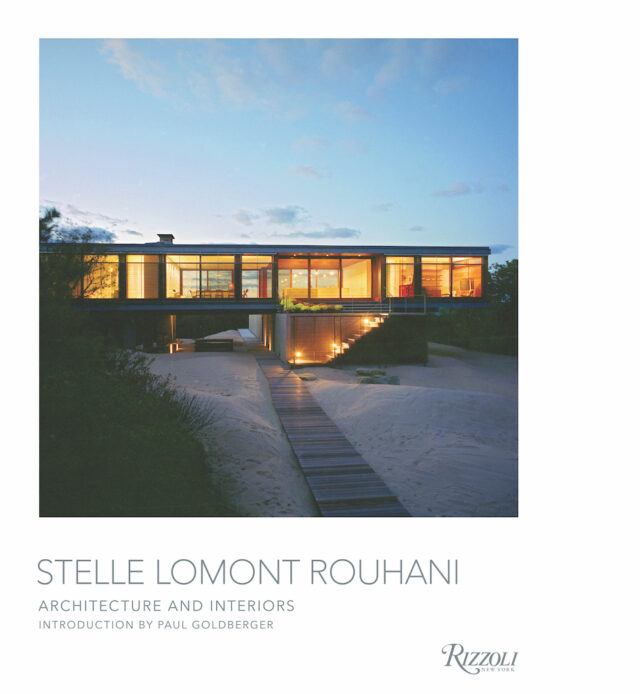
By Paul Goldberger
Modernism that fits? Modernism that does not shock? Modernism that can be “contextual” as so much traditional architecture claims to be? I think of Stelle Lomont Rouhani as being all these things, but to leave it at that sells their work short, since if it is restrained, it is hardly timid. These are elegant, well-crafted houses, generally although not always built of wood, that bespeak a considerable degree of self-assurance. This architecture is not flamboyant and it is not aggressive, but it manages to achieve an assertiveness and a consistent clarity. Stelle Lomont Rouhani does not make funny shapes. They barely even design any curves. But they make beautiful buildings that sit well on the land, and that is no small achievement.
To talk of these houses in terms of the Hamptons in general is in one way to do them a disservice, however, because it ignores the extent to which every one of these houses is specific to its site, and specific to its program. For most of this architecture, the concept of being responsive to context means being responsive to nature and to the land and the sun, not responsive to other buildings, although the consistent use of wood and glass as primary materials surely creates an ongoing connection to the midcentury modern architecture that continues to inspire the firm. The sites are almost all relatively private ones, either oceanfront or bayfront or within a forest or a meadow, in each case removed from immediate neighbors. The designs vary significantly in response to the particulars of each site, carefully oriented to views, to light, to sunsets, to created landscape, and the more you study them the more you see that while there is a consistent design vocabulary throughout, the way it is applied is highly specific to each house.

These architects are so attuned to responding to their surroundings that I will admit that I found myself wishing they would get a client or two who would commission them to design a house on a conventional building lot on a street in one of the Hamptons villages, since it would be wonderful to see how they might respond to the challenge of putting their discreet modernism next to an old, shingled cottage. The most literally contextual building they have done is not a residence, but the Emporium Hardware store in the old village of Sag Harbor, which brilliantly synthesizes a modernist sensibility with a 19th-century brick row of commercial buildings, and has been a subtle, welcome presence on one of the finest small-town Main Streets in the nation. The best indication of what Stelle Lomont Rouhani might do with a house, however, might be the firm’s cool and composed office, which is in a beautiful, dark-stained barnlike structure in the village of Bridgehampton that takes its cues from an old cottage on the site.
Excerpted from Stelle Lomont Rouhani: Architecture and Interiors, by Frederick Stelle, Michael Lomont, Viola Rouhani; introduction by Paul Goldberger (Rizzoli New York, 2023).



